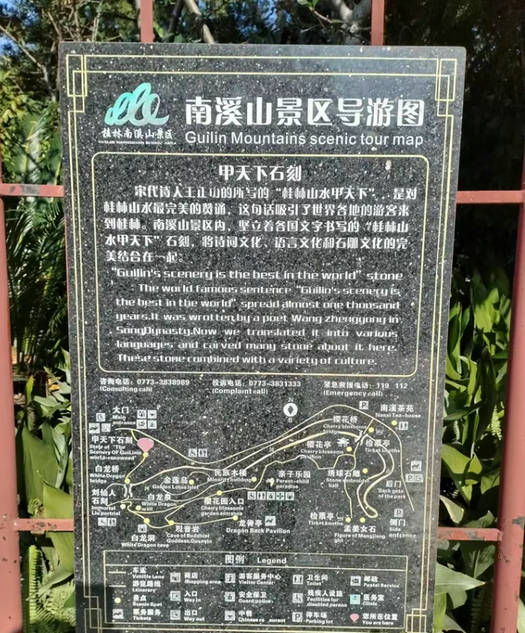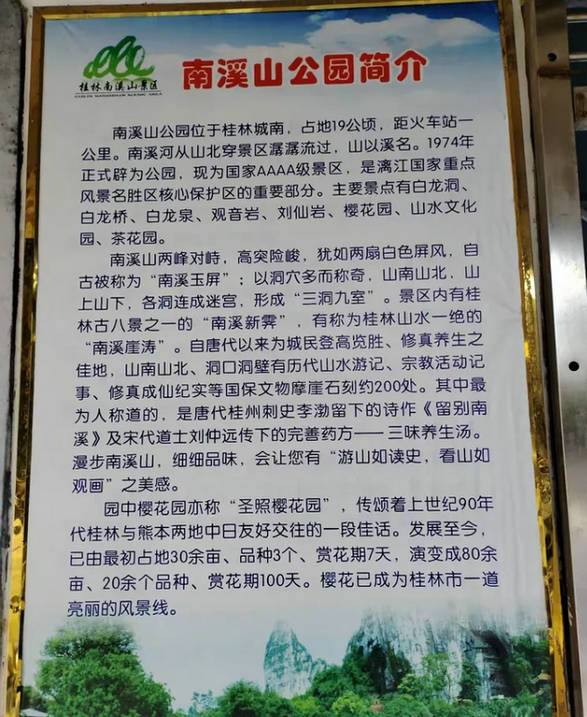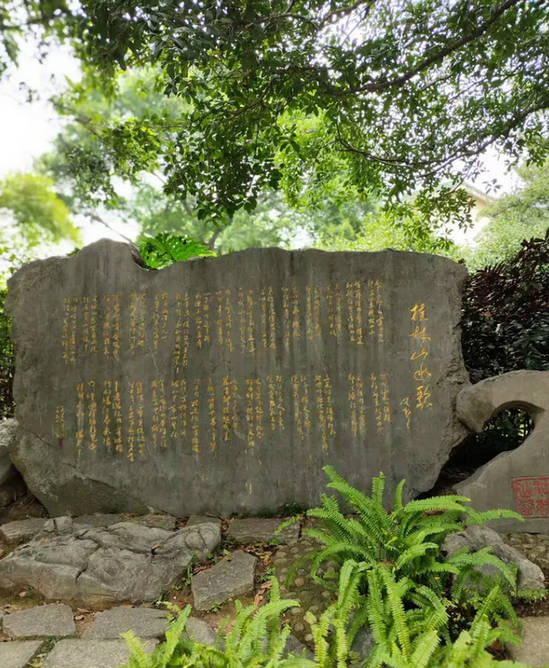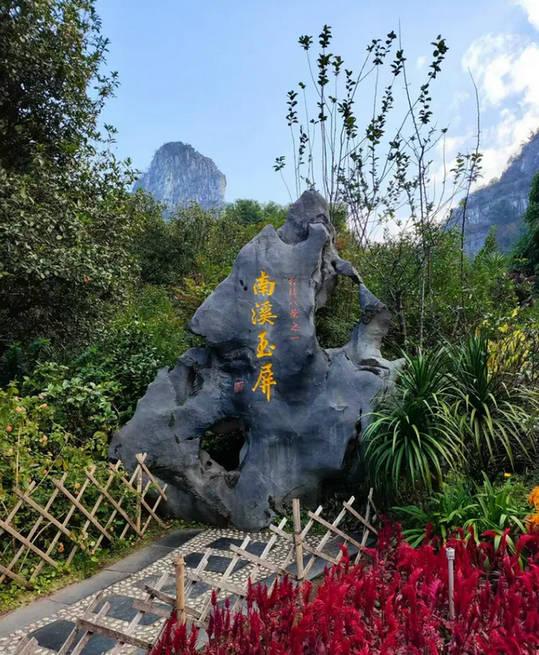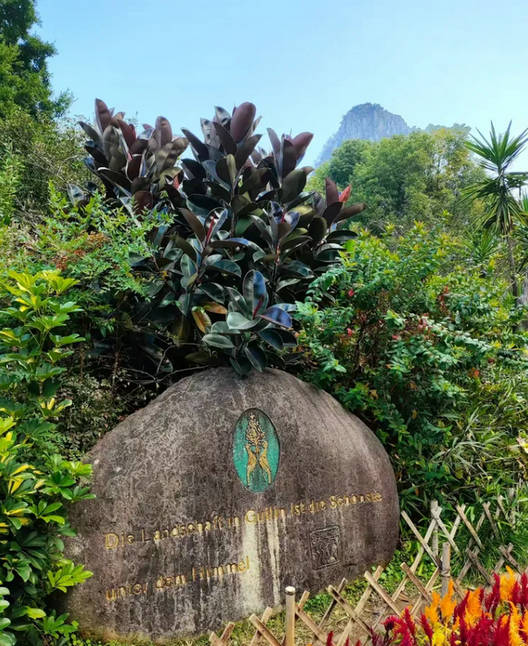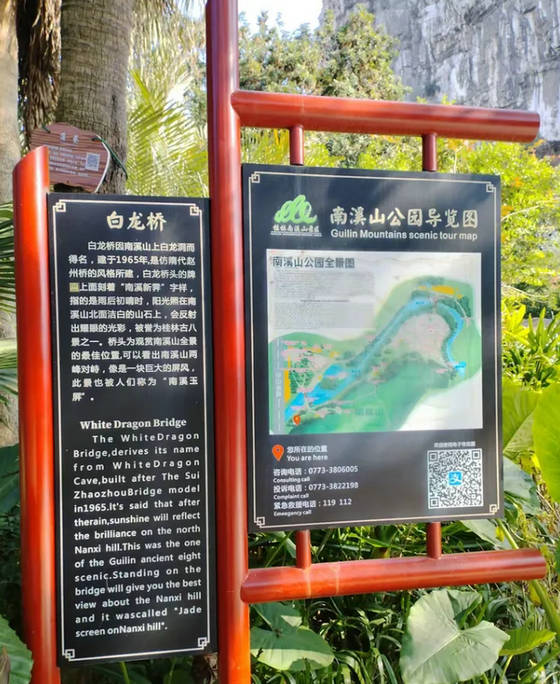Nanxishan Park
GuiLin Nanxishan Scenic Area, also known as GuiLin Nanxishan Park, is a national AAAA scenic spot located in the south of GuiLin City, Guangxi Province. It is about 1 kilometer north of the railway station and covers an area of 20 hectares. The two peaks of Nanxi Mountain face each other, towering and steep, like two white screens, and have been known as the "Nanxi Jade Screen" since ancient times. The Nanxi Mountain Scenic Area in GuiLin includes multiple caves such as Bailong Cave, Liuxian Rock, Guanyin Rock, and Sizhou Rock, as well as excellent locations for distant viewing such as Longji Pavilion. There is Bailong Bridge on the Nanxi River and scenic spots such as Bailongquan on the north bank of the mountain stream.
| Chinese name | GuiLin Nanxi Mountain Scenic Area |
| Foreign name | GuiLinNanxishanScenicArea |
| geographical position | South of GuiLin City, Guangxi |
| climatic conditions | Subtropical monsoon climate |
| Opening Hours | 8:00 AM -5:30 PM |
| Scenic spot level | National AAAA level scenic spot |
| Ticket Price | 90 yuan |
| area covered | 20 public tilt |
| Famous scenic spot | Bailongqiao, Bailongquan, Bailongdong, Guanyinyan, Sakura Garden, Liuxianyan |
| Honor 1 | GuiLin Lijiang National Key Scenic Area |
album
geographical environment
GuiLin Nanxi Mountain Park - In 2010, it was rated as a national 4A level scenic spot and named GuiLin Nanxi Mountain Scenic Area. Traveling south from Zhongshan Avenue in the city, not far from the South Railway Station, you will arrive at Nanxi Mountain. It is located on the east side of Jiangjun Bridge in the southern district of GuiLin, with a mountain height of more than 140 meters, a length of 350 meters, and a width of 180 meters. It has two towering peaks and stands by the stream, with beautiful scenery complementing each other. Therefore, it is called "Nanxi Yuping".
Rising up the steep Nanxi Mountain, in what year was a fairyland created? Longyan pregnant with jade springs, blue and clear stream shadows. Fragrant seaweed shines brightly, waves enter the tranquil Zhishan Mountain. Rain tests new tea, and tourists compete for it. "Zhu Shude, a famous painter and poet in GuiLin during the Qing Dynasty, vividly depicted the magical atmosphere of Nanxi Mountain.
Main attractions
It can be seen that the natural landscape of Nanxi Mountain is fascinating both in ancient and modern times, and many celebrities and scholars are amazed by it. In the mountains, there are Bailong Cave, Longji Cave, Yuanyan, Guanyin Rock, Sizhou Rock, Chuanyun Rock... It is the first famous historical site and scenic spot in the south of the city, with a total area of 20 hectares. The giant monument at the entrance is listed as a national key scenic spot on the Li River in GuiLin. In 1974, the newly built three piece antique memorial archway in the park faced the street, with gray colored glaze cornices and antique appearance. The horizontal plaque with the three big characters "Nanxi Mountain" shimmers with golden light, dignified and unique. It is located close to the south side of the gate and is built with modern building materials. The antique long row building Qionglou, with green tiles and white walls, is elegant and harmonious with the scenery of Nanxi, becoming the most beautiful attraction for tourists. At the beginning, there is a stone tablet inscribed by Wang Zhenggong of the Song Dynasty, which reads' GuiLin's scenery is the best in the world '. The park covers an area of 18 hectares, with lush green grass and flower beds scattered throughout. The evergreen bamboo forest, the vigorous autumn maple, the graceful palm trees, the lush cassia trees, banyan trees, magnolias, etc., cover the sky and the sun. The clear and bottomless stream flows from west to east, and Fangzhou has been built in the water, named Jinlian Island, with pavilions and small bridges leading to it. The green stream in the south of the city is the origin of the beautiful name of Nanxi Mountain.
Nanxi Mountain is located at Jiangjun Bridge in the south of the city, about one kilometer away from the railway station, and is named after the winding Nanxi River. It has two peaks, parallel to each other, towering for thousands of feet, with a steep cliff to the north and pure white rocks. After the rain, the sky clears and the clouds and mist begin to bloom. The sunlight shines on the rocks, emitting a dazzling radiance. In ancient times, 'Nanxi Xinji' was one of the eight scenic spots in GuiLin. There are many unique caves in Nanxi Mountain, with Bailong Cave to the north being the most famous. Its entrance is high and wide, like a tall stone house, with white stone walls and a stone breast hanging down, resembling a dragon head, so it is called White Dragon Cave. Inside the cave, there are wonders such as Double Lion Stones, stalagmites welcoming spring, and white dragons spitting out pearls. Turn right out of Bailong Cave and you will arrive at Xuanyan, a colorful gallery composed of stalactites. This hole is divided into two sections. One can reach through the Yunyan Cave, which has a relatively short rock passage and is often traversed by clouds and mist. There are many precious stone carvings at the entrance of the cave. The left path leads to Guanyin Rock, which is named after a group of stalactites at the entrance that resemble Guanyin Bodhisattva. It has become one of the prayer sites for local residents in GuiLin.
Nanxi Mountain is located at the junction of Zhongshan South Road and Chongxin Road, east of Bayi Bridge. At an altitude of 291 meters, the relative height is 141 meters, the length is 350 meters, the width is 180 meters, and the mountain area is 7.75 hectares. The "Lingui County Annals" records: "Nanxi Mountain is located five miles south of the county, towering for a thousand feet, with smoke and green floating in the air. Its stream flows eastward into the Li River." "The stream is located in the south of the county and is called Nanxi," and "the mountain is named after the stream," hence the name Nanxi Mountain. Due to the presence of the White Dragon Cave on the mountain, it is named White Dragon Mountain. The Nanxi River surrounds the northern foothills and flows into the Li River. After the rain, Nanxi Mountain is now sunny, with clouds and mist beginning to disperse. The bright sun shines brightly, dazzling the eyes. In the 17th year of the Guangxu reign of the Qing Dynasty (1891), Zhu Shude listed "Nanxi Xinji" as one of the eight scenic spots in GuiLin, and wrote a poem praising it: "Rising the steep Nanxi Mountain, in what year did a fairyland emerge? Longyan is pregnant with jade springs, the deep stream shadows are blue. Fragrant seaweed reflects the radiance, and the waves enter the stillness of Zhishan Mountain. Rain sets to test new tea, and tourists compete for it." GuiLin's mountains and rocks are mostly blue and black in color, except for Nanxi Mountain where the east and west peaks stand side by side, the rocks are white, the cliffs stand in the sky, steep and steep, pregnant with green and smoke, and the colors of the blue rush to people, like two white screens standing in the south of GuiLin. Nanxi Yuping "is one of the new 24 scenic spots in GuiLin.
There are many and unique caves in Nanxi Mountain. To the south of the mountain, there are Liuxian Rock and Chuanyun Rock, while to the north, there are Bailong Cave, Yuanyan, Sizhou Rock, Longji Cave, and so on. There is Bailongquan located north of the mountain near Nanxi. The concave area between the two peaks is called Longji Ao, and Longji Pavilion is built on it. Built in early 1958 and redesigned in 1959, the "Zhong" - shaped antique pavilion was completed. The main pavilion is an eight pillar, single eave, rectangular with upturned corners, with pavilions on both sides and stone peaks on each side. The total area is 83 square meters, which is elegant and beautiful. The pavilion is the only way up the mountain. To the north of the pavilion, one can admire the city scenery and overlook the stream. To the south of the pavilion, one can find the peaks of Douji (Guishan). To the east of the pavilion, the Li River flows southward. To the west of the pavilion, the peak is high and connects with Yunhan, making it an indispensable place to climb the Nanxi River. There are nearly 200 cliff carvings in Nanxi Mountain, mostly distributed in places such as Bailongdong, Yuanyan, Sizhouyan, Liuxianyan, Chuanyunyan, etc. Zhao Kui, a Song Dynasty poet, vividly depicted the caves in the mountains of GuiLin in his song "Twenty Four Caves in GuiLin". The "Lingui County Annals" states that Nanxi Mountain is a place that was appreciated by Li Bo during the Tang Dynasty. When Li Bo was appointed as the Governor of Guizhou, he once developed Nanxi Mountain with deep affection. When Ren Man returned to Luoyang, he specially wrote the poem "Leaving Nanxi": "I often sigh that the spring spring will not return, and it is even more difficult for me to come here now. If I want to know where to show mercy after parting, I will plant rock flowers one after another." This poem was carved in the White Dragon Cave and recited by people.
Nanxi Mountain is located on the east side of Bayi Bridge, where Zhongshan South Road and Chongxin Road meet. It has an elevation of 291 meters, a relative height of 141 meters, a length of 350 meters, a width of 180 meters, and a mountain area of 7.75 hectares. The clear Nanxi River flows around the northern foothills and empties into the Li River. Nanxi Mountain, Elephant Trunk Mountain and Duxiu Peak belong to pure thick limestone. They were originally integrated with Douji Mountain and Luohan Mountain. They were eroded by water millions of years ago and separated into isolated peaks. Nanxi Mountain was developed earlier, with nearly 200 stone carvings left on the cliffs and cave walls since the Tang Dynasty. Li Bo's "Preface to Nanxi Mountain Poetry" records his development of Nanxi Mountain more than 1000 years ago. Since the Tang Dynasty, repairs have been carried out throughout the ages. After being converted into a park, it has been newly built and has become a distinctive landscape scenic spot in GuiLin.
Since 1996, the scenic area has planted over 500 cherry blossoms of more than 50 varieties on the north side of the mountain, becoming the largest cherry blossom garden in GuiLin city. Every early spring in February, cherry blossoms bloom beautifully. Nanxi Mountain holds the Cherry Blossom Festival every year and has become a beautiful scenic spot in GuiLin city.
favoured policy
In order to repay the noble medical ethics and selfless dedication of the majority of medical workers, the scenic area will be free for medical workers across the country to enter the park with valid certificates (doctor's certificate, nurse's certificate or other qualification certificates related to medical work) from the date of resumption of business (which will be uniformly released at that time) to December 31, 2020 (except for consumption items such as caves, pleasure boats, bamboo rafts, hot springs, glass walkway, cableway slides, performances, etc.).

Nanxishan Park
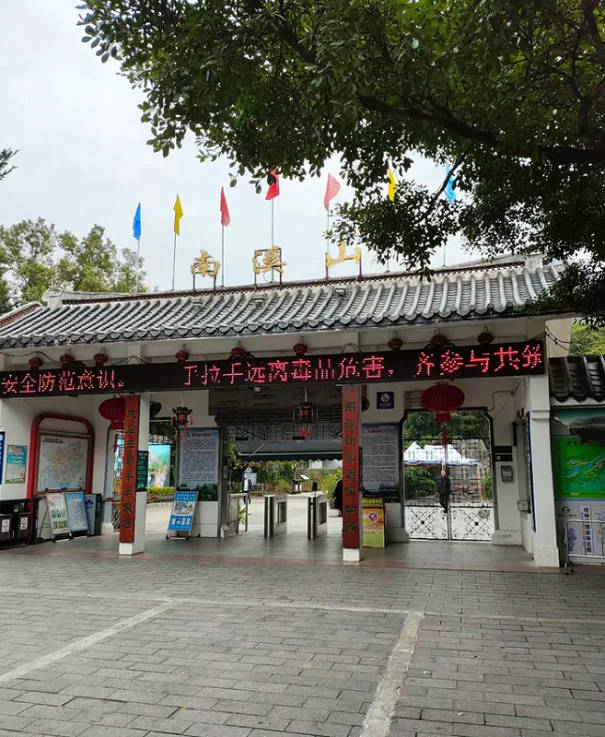
Nanxishan Park
-
Memorial Hall of Liaoshen Campaign
Memorial Hall of Liaoshen Campaign - Liao Shen Zhan Yi Ji Nian Guan
Views: 55 Time 2021-02-26 -
Jinzhai revolutionary martyrs cemetery
Jinzhai revolutionary martyrs cemetery - Jin Zhai Ge Ming Lie Shi Ling Yuan
Views: 40 Time 2021-02-26
